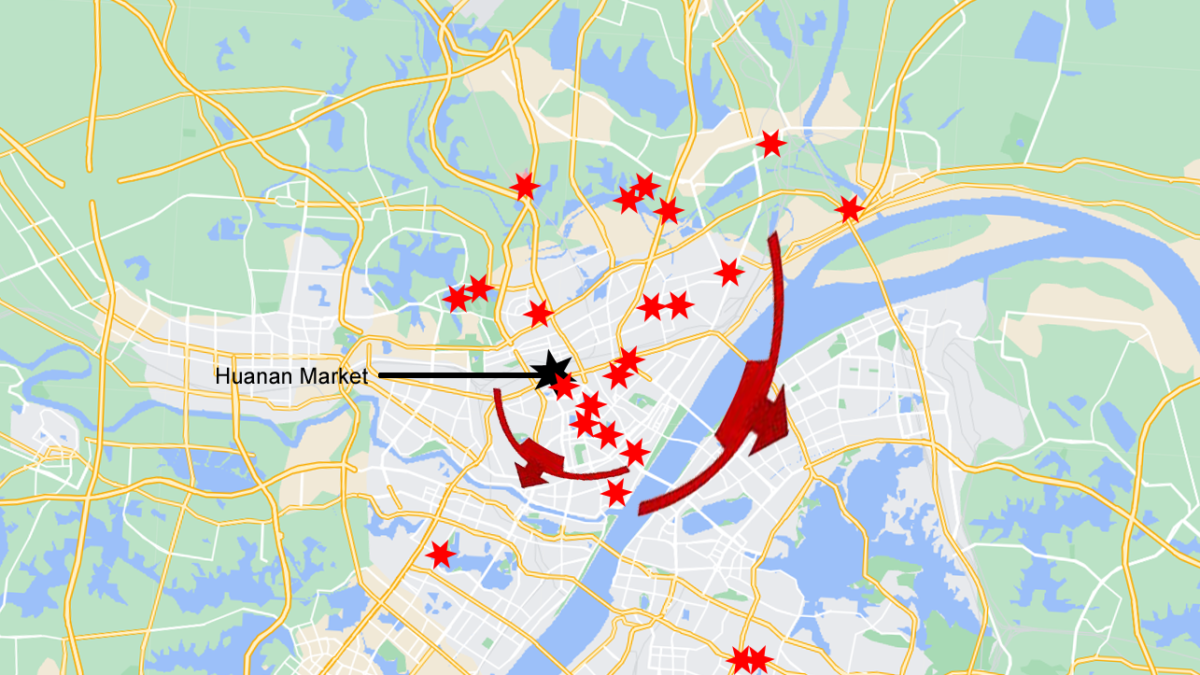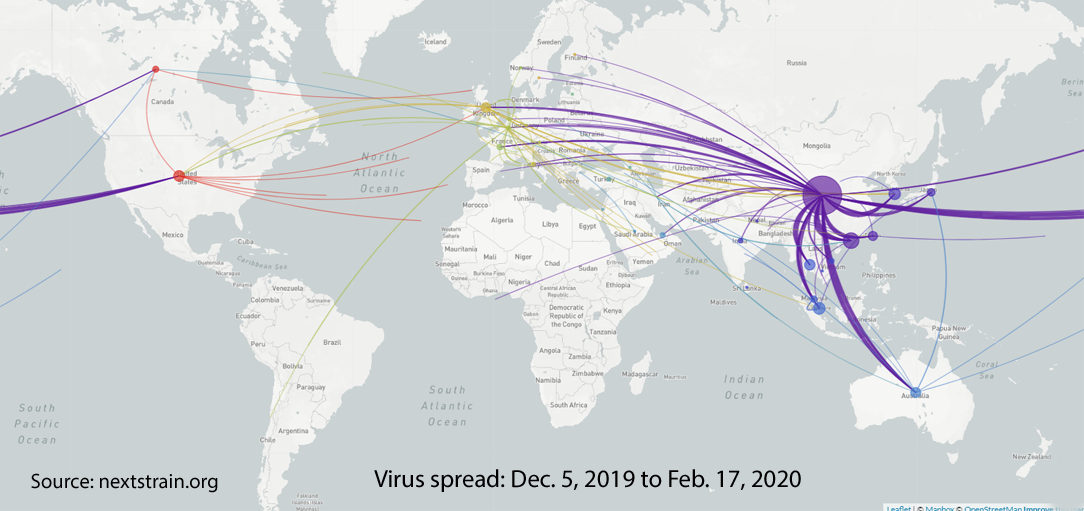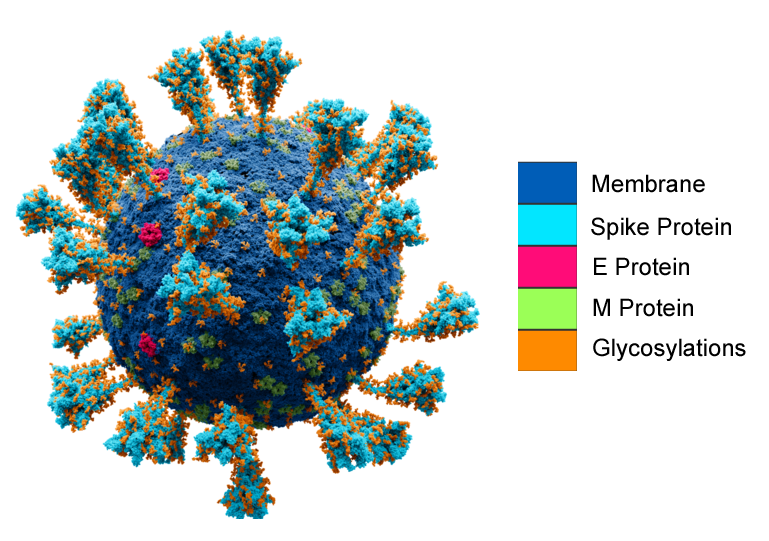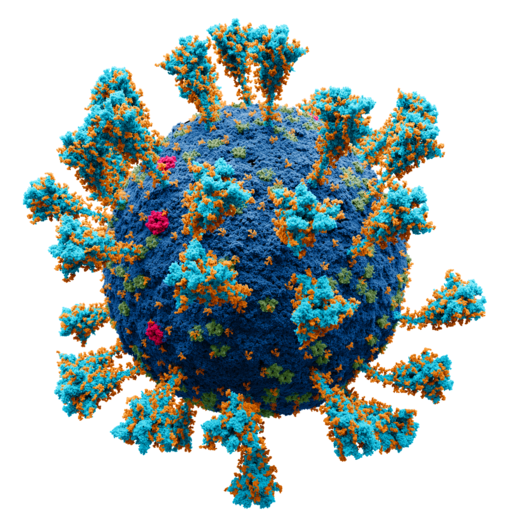Viruses
Intelligent Design Prize in Viruses 2019
Category
The Intelligent Design Prize in Viruses 2019
SARS-CoV-2
The Intelligent Design Prize in Viruses 2019
Exquisitely engineered, highly mobile, and undergoing intelligent redesign week by week, the SARS-CoV-2 virus has racked up victory after victory. Within months of initiating the COVID-19 Campaign, the virus was waging Acute Respiratory Distress Syndrome throughout the world.
Share this
The Intelligent Design Prize in Viruses is awarded to SARS-CoV-2 for its COVID-19 Campaign
Learn more

Breakout from the Huanan Market
The Huanan Market is located on the left bank of the Yangtze River in the city of Wuhan, Hubei Province, China. The COVID-19 Campaign began in December of 2019. SARS-CoV-2 viruses had their first engagement with their targets in the western section of the market. Although the location was favorable—it was densely packed with immunologically naïve targets—the initial assault was hotly contested and might have easily failed to meet its objective. Survival meant breaking out from the market and establishing a beachhead before counter-forces could be brought to bear. The viral design anticipated the adversary’s active defense with a clever stealth strategy: the virus could transmit to a new host before detection in the original host.
The earliest hosts had visited the market; their homes are shown above. From these early victories in and around the market the virus surged into Hubei Province, struggling to reach other target-rich regions.

Early sacrifices in China
In Hubei Province the virus met stiff resistance and was quickly overwhelmed. Within three months, its tenuous foothold was destroyed. By April 2020 it had produced only 68,000 cases and achieved only 4,500 successes, and was never again operational in Hubei. The Pandemic might well have ended before it began. But before the Wuhan contingent was destroyed, its descendents made small penetrations elsewhere. The map shows the first three months of viral deployment. The size of a disc reflects the relative number of cases in its geographic area, and the lines from each disc show recorded transmissions from that area. The purple lines show the breakout from China to other parts of the globe.

Easy success in Europe and the USA
In the next three months of engagement the virus met only limited and disorganized resistance in Europe and the United States. From February to May of 2020 it could replenish itself in these largely uncontested areas and move out to stage assaults in other countries(red and yellow lines). Here it truly came into its own and remained a formidable force in the following two years. For example, in New York City alone it produced over 2,000,000 cases and cleared 38,000 hosts

Continual fine-tuning of the virus
The SARS-CoV-2 which broke out from Wuhan was outfitted with the assets of a prize-worthy virus: host targeting, evasion of host immune counterattacks, virulence, replenishment of forces, and transmission to new hosts. And yet everywhere viral assaults met with stiff resistance from the targets’ innate and adaptive immune systems. Meeting the challenge of an arms race, the viral genetic code was continually being fine tuned, creating a series of variants. By the end of its second year of operations, there were 12 Marks of the virus, designated with Greek letters, and many sub-variants. In the summer of 2021 the hugely successful SARS-CoV-2 Mark Delta was introduced into service, its genome kitted out with 20 changes. Supplanting the Mark Delta in autumn of that year and equally impressive, the Mark Omicron had received 53 genomic modifications, with 30 alone found in the gene coding for its spike protein.
The continual fine tuning and then introduction of major variants can be likened to the engineering of improvements in computer software: iterative changes creating many small updates and an occasional large upgrade.
The figure shows on the left axis the relative proportion of each variant throughout the first two years of the Campaign and on the right axis cumulative viral success.

The irreducibly complex spike protein
In all Marks, the gene coding for the spike protein received major modifications. Found on the surface of a virion in numbers of 20 to 100, the spike binds to the ACE2 protein on the surface of a host cell. Grappling on to the cell, it forces the virion to invade the cell, a mission-critical step toward virulence. The extensive fine-tuning of this structure suggests reengineered strategies for entering a cell or for evading the host’s immune system.
Shown above is the spike of the SARS-CoV-2 Mark Omicron binding to the ACE2 protein. Highlighted are three clusters created by 13 amino acid changes found in no other variants. Each single modification had been tried in other Marks and found wanting. In this irreducibly complex design, 13 changes, each degrading performance when introduced singly, had been combined into a powerful new spike protein. In the field the Mark Omicron quickly edged out other Marks.
About the Intelligent Design Prize
The Intelligent Design Prize
The Prize Awarding Committees
Intelligent Design outreach activities
Prizes are awarded to systems that exemplify quality and perfection. Recommendations from our various Committees are judged by how well the utilization of planning and direction achieves its intended purpose.
The Committees, working independently, are tasked with passing the nominees through a rigorous filter that yields designs of specified complexity.
The Intelligent Design movement encompasses a wide range of social, political and cultural endeavors. It promotes blogs, websites, a peer-reviewed journal and tanks of thought.
Share this

